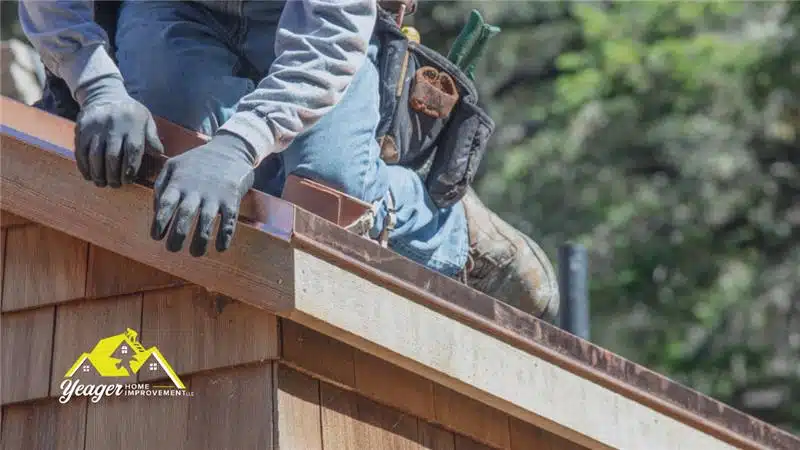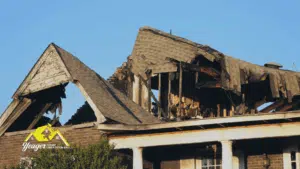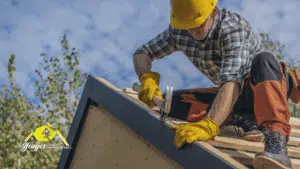When it comes to water intrusion protection for your home, roof flashing is among the most important—but commonly underappreciated—part of your roofing system. Whether you’re in the market for a full replacement of your roof or require immediate emergency roofing services, knowing the purpose, types, and installation of flashing is crucial for any homeowner.
Flashing acts as a protective seal at roof joints, directing water away from vulnerable areas. Without it, your home is susceptible to leaks, mold, and structural damage. We’ll explore what roof flashing does, the various types available, common materials, and why professional installation by trusted Pennsylvania roofing contractors matters.
What Is Roof Flashing, and Why Is It Important?
Roof flashing is a sheet of thin metal or other water-resistant substance placed at weak areas where the roof intersects vertical objects, like chimneys, dormers, vents, or walls. Flashing forms an obstruction that directs water securely off the roof and into the gutters.
Why Flashing Matters:
- Helps to keep your home’s interior from water damage
- Reduces chances for mold, rot, and leaks
- Extends the life of your roofing system
- Critical to weatherproofing weak joints
Flashing is more than a bonus—it’s an essential component in each and every full roof replacement job.
Common Types of Roof Flashing
Various sections of your roof need various types of flashing. Each has a specific purpose to provide complete protection.
Key Types of Roof Flashing:
- Step Flashing – Placed where the roof intersects with a vertical wall; overlaps each shingle.
- Continuous Flashing – Also referred to as “apron flashing,” it is run along horizontal joints between the roof and a wall.
- Counter Flashing – Put in place above step flashing, often around chimneys.
- Base Flashing – Coordinates with counter flashing to cover vertical protrusions such as skylights or chimneys.
- Valley Flashing – Positioned in roof valleys where two slopes converge to channel runoff.
- Drip Edge Flashing – Put in place at roof edges to keep water from running underneath shingles.
- Vent Pipe Flashing – Flashing around exhaust and plumbing pipes.
- Skylight Flashing – Special flashing used to cover skylights.
All of these are standard items on any job done by professional Pennsylvania roofers, like Yeager Home Improvement, LLC.
Roof Flashing Materials
The longevity of your roof flashing, as well as its appearance, is a function of the material used.
Common Flashing Materials:
- Aluminum – Lightweight and ideal for working with–requires coating to avoid corrosion.
- Copper – Extremely durable and aesthetically pleasing–a premium option.
- Galvanized Steel – Strong, cost-effective, and commonly used in residential roofs.
- Stainless Steel – Offers long-term durability and resistance to corrosion.
- Lead – Flexible and long-lasting, often used in historic home restorations.
- Rubber or Synthetic – Used for vent pipes and skylights–flexible and affordable.
If you’re investing in a roof replacement, choosing high-quality flashing materials is a smart, long-term investment.
Installation of Roof Flashing
Proper flashing installation is essential. Leaks and deterioration over time may result from poor craftsmanship or shortcuts.
General Installation Procedure:
- Locate weak joints and transition areas.
- Cut and bend flashing to cover the space.
- Fasten with suitable nails or clamps.
- Overlap the layers so water runs downward.
- Seal the joints with roofing cement or silicone caulk.
This must be performed by experienced roofing technicians, particularly on a full roof replacement or storm damage restoration.
Indications of Damaged or Failed Flashing
Damage to flashing is among the most frequent reasons for leaks on the roof. If you catch it early, you can save yourself thousands of dollars in repairs.
Warning Signs to Look For:
- Water spots on walls or ceilings
- Mold or mildew at the attic
- Peeling paint or rust around joints
- Missing or dented flashing metal
- Cracked sealant or exposed nails
If you observe these symptoms, you have to call in emergency roofing repair to inspect and repair the problem before more damage is done.
Roof Flashing Repair vs. Replacement
Issues with flashing vary from slight leaks to complete failure. How to know when to repair or replace:
When to Repair:
- Minor leaks or cracks in sealant
- Flashing is in good shape but was not sealed correctly
- Small rust spots
When to Replace:
- Damaged or rusted metal
- Flashing torn away from edges of the roof
- Severe damage caused by storms or weathered roofs
When undertaking any roof replacement job, it’s advisable to replace it with new flashing for total protection.
DIY Tips vs. Hiring a Professional Roofer
While one can do DIY repair, flashing should be left to a professional. Incorrect flashing installation can cause costly repairs in the future.
DIY Tips (for minor fixes):
- Apply roofing cement to seal small cracks.
- Replace missing nails and tighten loose flashing.
- Apply rust-inhibiting paint on small corrosion.
Why Hire Pros:
- Guarantees code compliance and warranties.
- Improved material selection and workmanship.
- Safer and faster installation.
- Often bundled with window installation or siding repairs by a window service provider.
Homeowners looking for long-term options should always seek out certified Pennsylvania roofing contractors such as Yeager Home Improvement, LLC, for reliable flashing repairs.
Maintenance Tips to Extend Flashing Life
Regular roof upkeep prolongs the life of your flashing and averts significant problems.
Maintenance Checklist:
- Check flashing bi-annually and following harsh storms.
- Clean gutters to avoid water backup.
- Re-caulk joints when necessary.
- Make sure flashing is tightly secured and free of any rust.
Integrating flashing inspections into your yearly home maintenance routine can defer the requirement for emergency roofing work.
How Flashing Fits into a Full Roofing System
Flashing is a critical component of the entire roofing ecosystem. It works in harmony with:
- Shingles or metal panels
- Underlayment layers
- Gutter systems
- Soffit and fascia boards
- Skylights and energy-efficient windows
If you’re hiring a window service provider for an exterior remodel, it’s a good time to have your flashing evaluated as part of the upgrade. Many local providers, like Yeager Home Improvement, LLC, offer bundled exterior services for added convenience and protection.
Why Roof Flashing Is Non-Negotiable
Roof flashing is the initial defense of your home against water damage. While it is a small component of the roofing equation, its significance cannot be overstated. Sealing roof valleys, covering chimneys and vents, and flashing keep your roof—and home—dry and long-lasting.
Final Takeaways:
- Roof flashing prevents leaks.
- Damaged flashing can lead to costly repairs in no time.
- Always incorporate flashing in any roof replacement endeavor.
- Rely on skilled Pennsylvania roofing contractors for the installation.
- Pair flashing inspections with service from a window service company for total exterior protection.
Ready to safeguard your home against expensive water damage?
Get in touch with Yeager Home Improvement, LLC today for professional flashing inspection, roof repair, and full roof replacement solutions. Arrange your complimentary consultation, and allow us to provide you with long-lasting roofing and exterior solutions that you can rely on.




